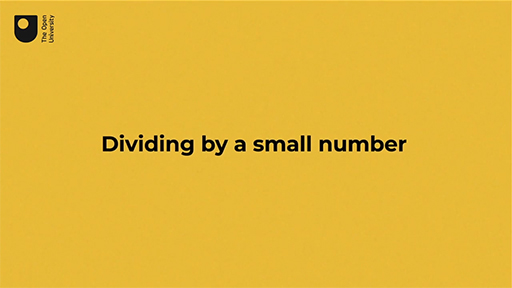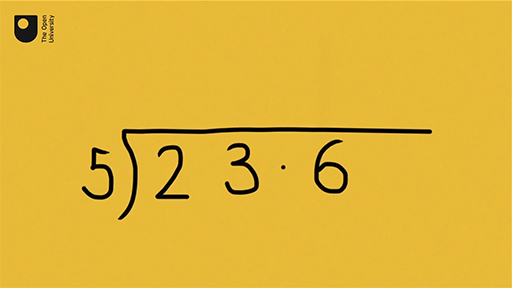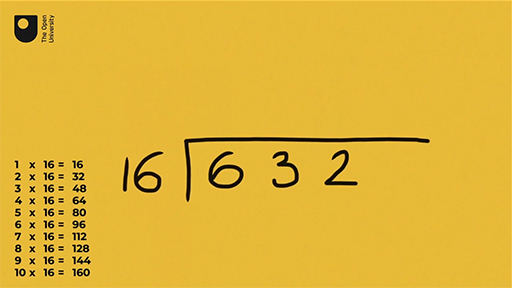7 Division
You know from the last section that multiplication is repeated addition, similarly division can be thought of as repeated subtraction. For example, 20 divided by 4 is 5 (20 ÷ 4 = 5). The answer is 5 because 5 is the number of times you subtract 4 from 20 to arrive at zero:
This also leads to the realisation that division is the opposite or undoes multiplication. If you add 4, five times to zero (repeated addition or multiplication) then you will arrive back at 20.
And just as with the other operators, there are words that tell us you need to divide.
Here are some examples that you may recognise:
- How many times does 8 go into 72?
- How can you share 72 items equally among eight people?
- How many lots of five are there in 20?
Unlike multiplication when there is only one symbol that says multiply, division has a whole family of notation! If you want to divide 72 by 8 this can be written in the following ways:
72 ÷ 8, or , or 72/8 or
Not all division problems will result in a nice whole number answer and you may have a number left over. This number is known as the remainder. The common notation is to show this using the letter R.
Now, you’re going to look at division on paper, just as you did with multiplication. You set up division on paper using the final notation from the list above. Starting from the left divide into each number in turn, writing the result above the number you have divided into. Watch the video below to see how this works.

Transcript
Division also works in a similar way when you are dividing a number involving decimals by a whole number. In cases like this, you just have to be careful to put the decimal point in the right place.
Wacth the video below to see an example.

Transcript
What happens if you have to divide by a larger number – something like 16, say? It’s easiest to do it using your calculator, but if you don’t have your calculator, you can still do it using this method. The next video shows how.

Transcript
Now have a go at the next activity. If you wish you can view the times table [Tip: hold Ctrl and click a link to open it in a new tab. (Hide tip)] again.
Activity 6 Division
On a piece of paper, perform the following operations by hand.
(a) 4968 ÷ 24
Answer
The solution is 207.
(b) 4035 ÷ 15
Answer
The solution is 269.
When looking at subtraction and addition, you thought about whether it mattered in what order these were carried out. You found that for addition the answer is the same whatever the order, but that this is not the case for subtraction. What about multiplication and division? You’ll find out in the next section.

